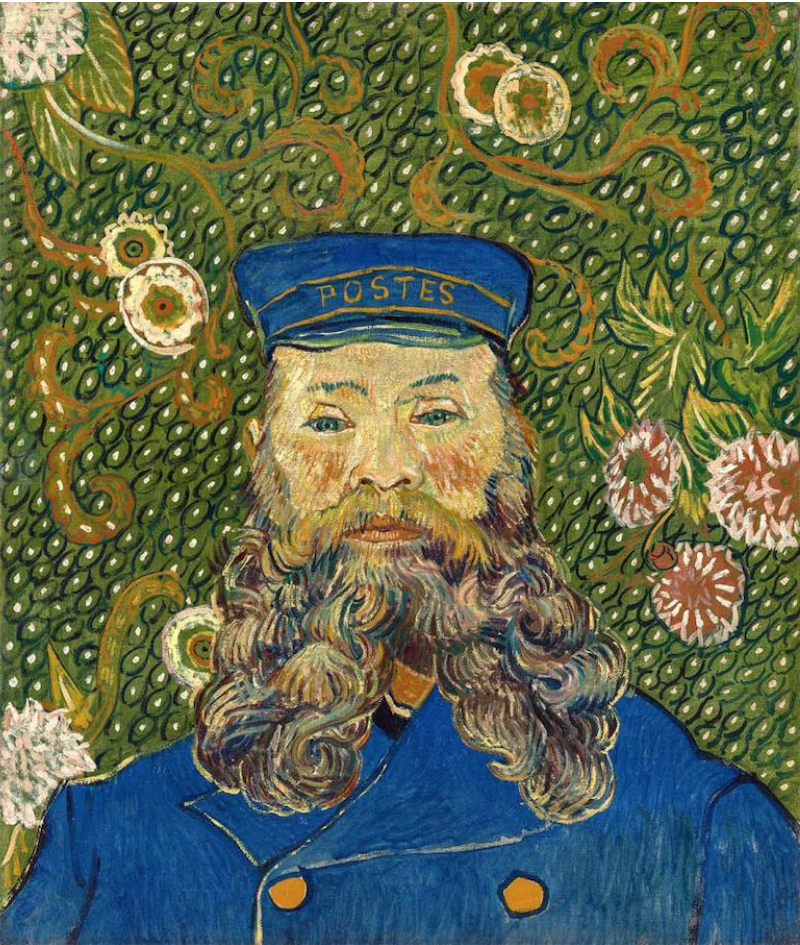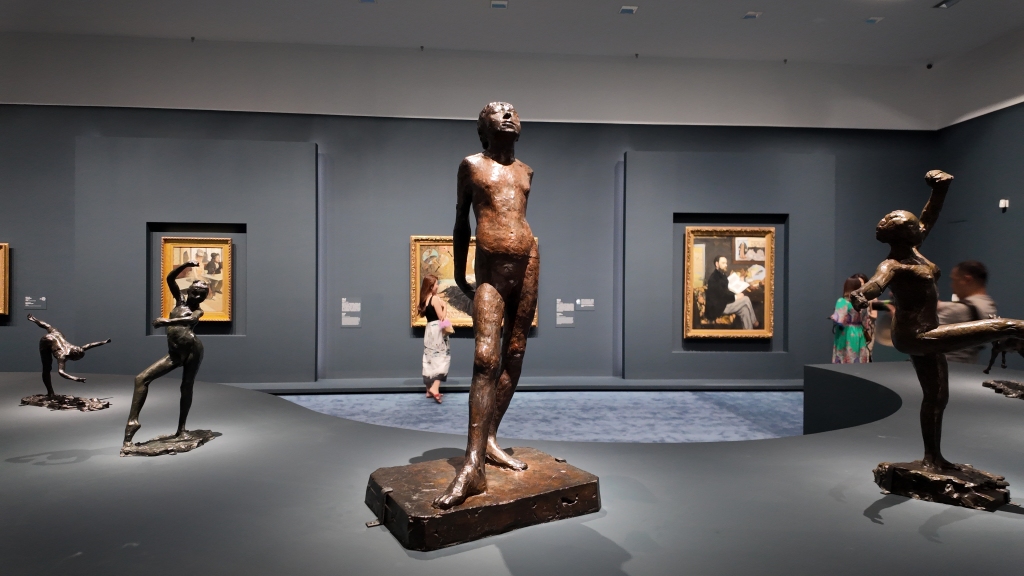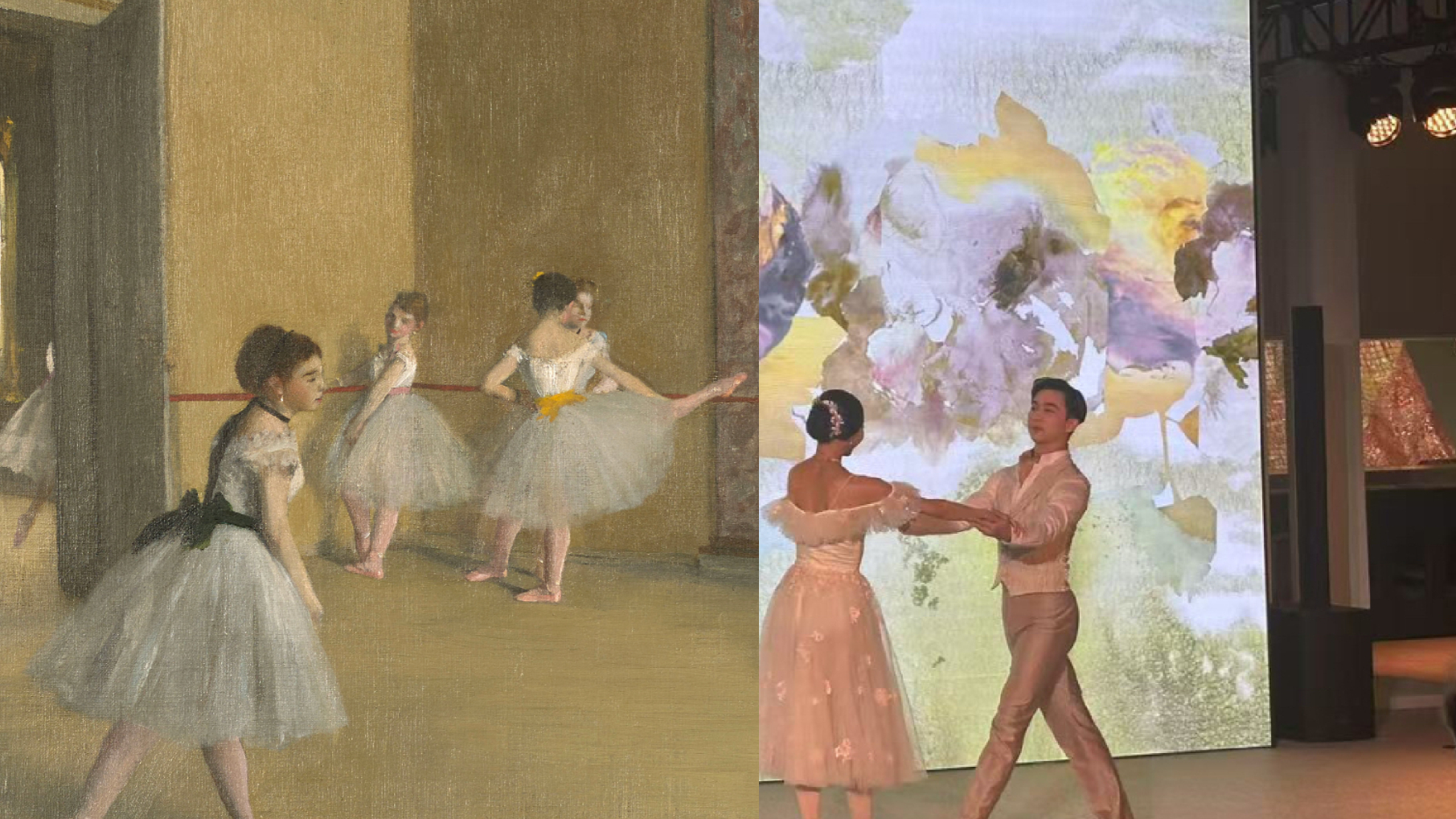
In the "Orsay Exhibition" at the Shanghai Pudong Art Museum, Van Gogh's "Bedroom in Arles" is one of the most popular works.
The painting was created in Arles, located in southern France. During his stay there from 1888 to 1889, Van Gogh actually created many portraits of his neighbor's family - postman Joseph Roulin, his wife Augustine, and their three children: Armand, Camille, and Marcel. The Paper learned that these paintings created in Arles were recently exhibited in the "Van Gogh: Roulin Family Portraits" exhibition held at the Museum of Fine Arts (MFA) in Boston, showing the warm relationship between Van Gogh and the postman Roulin's family.
It was February 1888, and the south of France was freezing cold. After two tumultuous years in the art world, Van Gogh was increasingly depressed, and even though his brother Theo had taken him in, he finally left Paris. He packed his bags and headed for the riverside town of Arles, where, he wrote, he hoped there would be “more color, more light.”
However, he encountered a blizzard there. Braving the cold, he fixed his easel to the ground to protect it from the wind and began to paint orchards and landscapes. By July, he complained to Theo, "I have not yet gained the hearts of the people." To find a model, an artist needs either money or social graces. Vincent lacked both. "Disappointment often cuts his heart and makes him less than a normal person," his sister William Milne wrote.

Vincent van Gogh, Joseph Roulin, the Postman, 1889
However, all this changed when he met postman Joseph Roulin in a bar. He wrote in a letter in July that Roulin had a Socratic head. He was more interesting than many people and was an ardent republican. He had a high forehead, a bald head, small gray eyes, full cheeks, a thick gray beard and big ears. Roulin became Vincent's confidant, diplomat and important model. Over the next six months, Van Gogh painted 26 portraits of Roulin, his wife Augustine and their three children. Van Gogh only painted one portrait of Theo.
Visitors can feel this outpouring of passion in the special exhibition at the Museum of Fine Arts, Boston. The exhibition presents 14 portraits of the Roulin family painted by Van Gogh, as well as 30 works and archival materials by Van Gogh and artists related to him, to explore the relationship between the characters in the paintings. It is this relationship that allowed Van Gogh to examine the spiritual qualities of color and pigment. This exhibition is also the largest exhibition on this family.

Vincent van Gogh, The Postman Joseph Roulin, 1888

Joseph Roulin, 1902, file photo
There are four paintings by Roulin in the exhibition. In the first, from July 1888, Roulin’s pink face looks alert and slightly amused. The background is a powder blue, and the brushstrokes are bright and crisp. What lies behind these paintings? Friendships across class often begin with transactions and eventually develop into trust. When his wife gave birth to their third child, Roulin took to modeling. For Van Gogh, Roulin provided an experimental face. The last portrait of Roulin was painted in early 1889. It is wilder, with a shaggy beard tied in knots and dyed in amber and turquoise. It is also a clear indication that Van Gogh did see his model. Nearby, hanging works are caricatures of the Merry Drinkers by Daumier and Hals, borrowed from Amsterdam: like the portrait of Roulin, the face is very striking.
In November 1889, Roulin brought his wife and children to the "Yellow House". Van Gogh and Paul Gauguin once lived together here, hoping to create an artist colony. During that meeting, the bust of Camille, the second child of the Roulin family, showed him staring into the distance with his mouth open, and the colors behind him were very eye-catching. This work is juxtaposed with the Japanese prints from the 1860s that Van Gogh admired in Paris, which have a unique charm. Because these prints are good at creating a harmonious atmosphere through the conflict of primary colors.

Vincent van Gogh, The Yellow House (Street Scene), 1888

Vincent van Gogh, Camille Roulin, November–December 1888
In Van Gogh's early portraits painted in Paris, such as his self-portrait of 1887, the brushstrokes are cheerful, even rainbow-colored, but the treatment of skin tones and light still retains the neatness of pointillism, similar to the style of his Post-Impressionist contemporaries Georges Seurat and Paul Signac.
In Arles, he went further. Here he rejected the subtle tones forced upon him by Parisian critics. He fought back with pure, piercing colour. “You cannot be at the pole and at the equator at the same time,” he wrote of the allure of extremes. In the two portraits of Augustin Roulin on display, La Berceuse, her face is Dijon yellow and her hair is carrot-coloured, held tight with brushstrokes. Gauguin’s interpretation of Augustin, also on display, is also distinctly yellow. And look at her hands: standard Caucasian hands, painted flat. It’s as if Van Gogh is coding areas of her soul with paint, with the face on high alert. “I never thought of a better way to paint it,” he wrote.

Vincent van Gogh, Lullaby: Madame Augustine Roulin Rocking the Cradle, 1889
Augustin Roulin holds a rope in his hand. What is it tied to? A clue appears nearby: an illustration from The Holy Family printed in England in the last century. In it, Saint Anne, Mary's mother, pulls on a rope to rock her grandson's cradle. Van Gogh had hung a version of this painting in his room as a young man, the original said to be by Rembrandt. In 1882, he hung it over the cradle of a child of a prostitute he took in in The Hague. Years later, he referenced this element in his portrait of Augustin, making the subject appear cold and lonely while silently linking her to an ideal of motherhood.
In fact, there was no such rope when Augustine posed. We learned from the exhibition curators, Katie Hanson of the Museum of Art in New York and Nienke Bakker of the Van Gogh Museum in Amsterdam, that Van Gogh included the rope in the painting, as well as the "dahlia" wallpaper he had made up, a flower he associated with his mother, whom he had disowned after being asked to leave his home. Did he see a reflection of his mother in this stranger?

Vincent van Gogh, Bedroom, 1889
Perhaps the artist's fear of abandonment flared up again when Theo announced his engagement to Johanna Bonger on Christmas Day. A quarrel with Gauguin exacerbated the situation. Vincent injured his ear during a fit and passed out. Gauguin fled. Theo rushed to the hospital but left the same day. Joseph Roulin cared for Vincent during those hellish weeks.

Vincent van Gogh, Armand Roulin, 1888
The letters that Roulin wrote to Theo and William Milne are on display here, making the postman real in history: December 26: "I am sorry to tell you that I think he is lost"; December 28: "My wife went to see him and he hid his face when he saw her coming"; January 3: "My friend Vincent has fully recovered." In January, Roulin was transferred to the coastal city of Marseille. The other four letters to "Monsieur and dear friend Vincent" are also very touching.
In the summer of 1889, Van Gogh was admitted to the asylum in Saint-Rémy, where his colors and atmospheres became more active, developing in inspired but uneven directions. In the summer of 1890, Van Gogh took his own life.

Vincent van Gogh, based on Rembrandt's engraving The Raising of Lazarus, 1890
The exhibition foreshadowed how he would develop his style for the rest of his short life: in 1890 he painted a gilded version of Rembrandt’s The Raising of Lazarus, which included images of himself and Augustine.
The exhibition seems to suggest that for a marginal artist, a stylistic breakthrough can be exactly the same as an emotional breakthrough. Copying his own work, or “versioning,” was how Van Gogh worked, both socially and aesthetically. In one room, there is a bust of the baby Marcel, her Prussian blue eyes set like marble in a doughy face, hued in pink. In another room, there is a version from a private collection. Van Gogh sent several works to the Roulins. After his death, the Roulins sold the paintings and sent other versions to the art dealer Theo. The Amsterdam painting of “Marcel” was sold to Theo. While pregnant, his wife Johanna would gaze at the baby painted by Van Gogh in their Paris apartment. They named their son Vincent.

Vincent van Gogh, Augustin Roulin and the Infant Marcelle, 1888

Vincent van Gogh, The Infant Marcel Roulin
This powerful exhibition seeks to make the case that Van Gogh’s habit of copying was an expression of devotion. Gauguin and another artist on display, Émile Bernard, encouraged him to paint from his imagination. But he didn’t. All these faces remind us that what he did have was an intense, obsessive power of observation that, when applied to canvas, could elevate objects in space to their truest form. When his gaze turned inward, it overwhelmed him.
The exhibition will run until September 7th.


